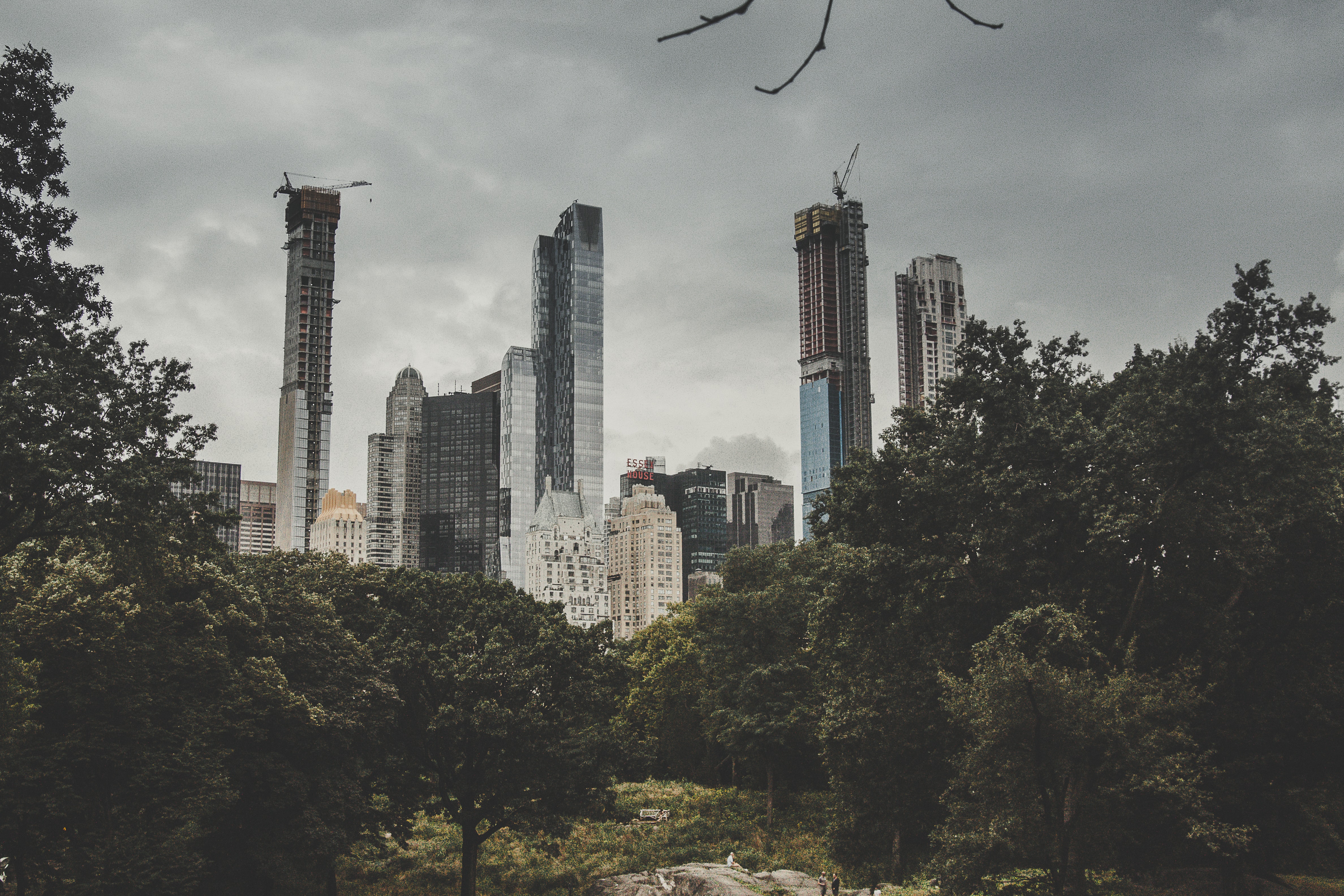Discover experiences in East Village
What to do in East Village

East Village overview
The East Village. The name alone conjures up a funky, bohemian vibe mixed with the nostalgic tinge of a bygone era. Located between Avenue A and the Bowery, with 14th Street as its northern boundary and Houston Street on the south, it is divided into 3 subsections: Alphabet City, Little Ukraine and the Bowery. It was once considered part of the Lower East Side, but in the 1950s, when it became the center of the alternative art scene, it was given its own designation as part of its rebranding. The East Village is known as the slightly grungy but trendy cultural heart of New York City. But, like all neighborhoods in lower Manhattan, it is now also home to an assortment of luxury apartment buildings and destination restaurants.
The Vibe
The East Village thrived as the bohemian home to artists, beatniks and hippies in the 1950s and 60s. Despite inevitable gentrification, it has managed to retain its grungy vibe and vibrancy, especially compared to other parts of the city. Its famous residents include Allen Ginsberg, Abbie Hoffman, and Norman Mailer. Among its iconic hotspots were the Fillmore East and CBGB, the birthplace of punk music.
The Culture
A large community of Germans were among the first inhabitants, followed by the largest settlement of Jews in the world, who arrived in the early 1900s. After World War II, the neighborhood attracted migrants from Puerto Rico, Ukraine and Poland. They were soon followed by artists, hippies and wanderers. The Beatnik and hippie influx of the mid-1900s gave rise to a rich culture of art and music. It is where the Ramones, Andy Warhol, the Velvet Underground, Jimi Hendrix, and Iggy Pop played and lived. In the 1970s, punk rock clubs and gay dance halls proliferated. CBGB hosted Bruce Springsteen, Patti Smith and Talking Heads, while the Pyramid Club showcased artists ranging from RuPaul to Nirvana. During this time, over 100 art galleries populated the neighborhood. Today, the East Village’s edgy vibe lives on, reflecting its history as the home to immigrants, a haven for artists and the birthplace of punk music.
Architecture
In the early 1800s, the East Village was one of the wealthiest residential neighborhoods in the city. Its architecture is a mixture of Greek Revival and Federal-style row houses. Hamilton-Holly House and Daniel LeRoy House, two of the remaining row houses on St. Mark’s Place, are city landmarks. You can still see vestiges of the original tenement buildings, which dominated the housing type at the beginning of the 20th century. These are the low-rise, flat-roofed buildings with multiple apartments that were typically narrow. Most of them have been modernized or knocked down to accommodate luxury housing.
Popular Sites
Among the East Village’s most popular sites is the Nuyorican Poets Café, which was founded as a meeting place for non-traditional Puerto Rican poets. Currently a multi-cultural and multi-arts institution, it gives voice to a diverse group of rising poets, actors, filmmakers and musicians. Merchant’s House Museum, on 4th between Bowery and Lafayette, is allegedly the most haunted place in New York City. Located in an 1832 landmark building, it tells the story of the domestic life of a wealthy merchant family and its four Irish servants, 1835-1865. Don’t leave without a visit to the Russian and Turkish Baths on East 10th. Originally opened in 1892 to provide communal bathing to overcrowded immigrant communities without access to hot water in their homes, indulge in one of its uber modern spa services.

How to spend a day in East Village
Shopping
The East Village has always had a reputation for its independent bookstores. Check out East Village Books on St. Mark’s Place, a St. Mark’s institution. It sells primarily secondhand books, as well as DVDs and music. They will also buy your old textbooks for cash. We love Assembly, founded by a former gallerist, Greg Armas, in 2008. It sells clothing and accessories from international and rare designers with an emphasis on craft and design rather than trendiness. Its own line, introduced in 2009, is made in NYC from upcycled and deadstock fabric.
Outdoors
Take yourself on a self-guided rock and roll walking tour through Alphabet City and the Bowery. You can check out CBGB at 315 Bowery, which was originally a 19th century saloon on the first floor of the Palace Lodging House. Take a selfie in front of the “CBGB ‘73” logo etched into the cement at the entrance to its current occupant, a retail clothing store. Originally built as a Yiddish theater in 1925, the 2,700-seat Fillmore East at 225 East 6th Street, Bill Graham’s altar to rock and roll, where Janis Joplin, B.B. King and the Allman Brothers once performed. The auditorium has since been demolished and replaced with an apartment building, and the original lobby is now a branch of the Apple Bank for Savings. If you’re really industrious, you can find out where Madonna, Joey Ramone, and Iggy Pop once lived. Or you can take a guided walking tour from one of many outfits offered online.
Food
No trip to the East Village is complete without lunch at Katz’s Delicatessen. Originally opened in 1888 on Ludlow Street in the Lower East Side, it moved to its current location 205 East Houston in 1917, an empty lot where you could buy meats and pickles right from the barrels. Its façade, which is still standing, was added after the end of World War II. Automats have always been a part of New York City’s history, providing a cheap and quick means and a showcase of new technology. You can relive the experience at the East Village location of the Brooklyn Dumpling Shop, which provides a zero contact dining experience inspired by the COVID pandemic.

How to spend a night in East Village
Entertainment and Nightlife
The original center of counterculture in New York, you will find many former Yiddish theaters that were converted to venues for off- and off-off Broadway shows. Check out La MaMa Experimental Theater Club, the Truck & Warehouse Theater on Bowery and Second Avenue and the Fourth Street Theater. Webster Hall was known as a venue for wild parties during Prohibition, as well as the place where Marcel Duchamp, Many Ray and F. Scott Fitzgerald hung out. After a recent $10 million renovation, it is both a nightclub and music hall with 1400 seats. It is located at 121 East 11th Street. Then there’s Angel’s Share, the original bar in the specialty cocktail movement. Located in a hand-to-find second-floor venue on Stuyvesant Street, it can be accessed through a hidden door in a Japanese restaurant. The popular speakeasy serves amazing bespoke cocktails.
Food
No restaurant beats Veselka, which has been serving up Ukrainian food from the same location since 1954. It’s known for its homemade soups, meat plates and pierogies. For vegetarian cuisine, try Avant Garden, which, according to the Michelin Guide, serves excellent food that just happens to be vegan. Since its opening in 2015, it has been serving the East Village’s most popular vegan dishes and global natural wines.
Popular experiences
Frequently Asked Questions
What is East Village known for?
The East Village is known as New York’s historic center of counterculture and alternative art. Today it still retains its indy, hip vibe.
How do you get around East Village?
Measuring a mere 492 acres, it is easily walkable. The best way to explore its off-the-main-drag side streets is on foot.
What do you HAVE to do in East Village?
No trip to the East Village is complete with a visit to Tompkins Square Park, a square-shaped, 10.5-acre park in Alphabet City or St. Mark’s Place, the area’s cultural main street, located between Third Avenue and Avenue A.
What are the best restaurants in East Village?
A local favorite is the amazing Casa Adela for authentic Puerto Rican cooking.
